How To Cook Eggs
-
Darrian Wilkins
- Last update: November 19, 2021
Disclaimer: we may receive commissions from purchases made via our links at no cost to you
An egg is one of natures most simple foods, it can be said that an egg can be prepared in 100 or more ways, from fried, boil, scrambled, poached, or even made into a sauce or dressing.
But what is it that makes the cooking of something as simple as an egg so difficult?
Even with trial and practice, the humble egg can go from an elusive masterpiece to a disastrous mess in a matter of seconds.
This article will start with two of the most sought-after and much-envied egg dishes to accomplish, fried eggs and scrambled eggs. Get these simple dishes wrong, and it’s an embarrassment to your cooking ability. Get it right and you have become a master of the culinary world.
What Type of Pan to Choose - Shape and Size
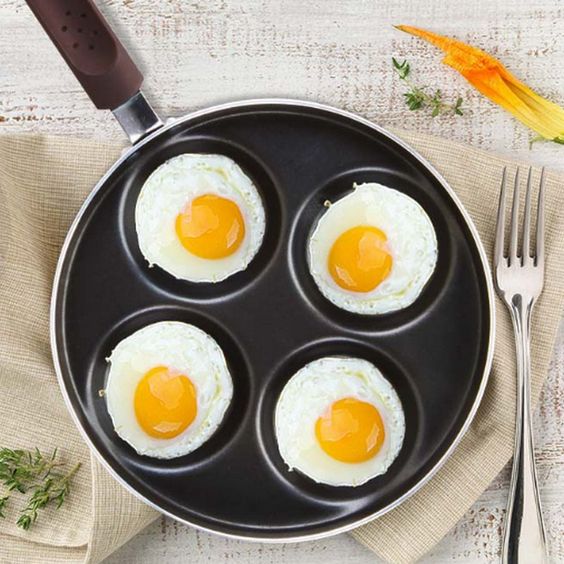
Basically, you can cook fried or scrambled eggs in any pan you choose. However, there are tricks and techniques you will need to know before you attempt cooking eggs in differently constructed pans.
So what is the best pan to use?
Typically a skillet with the dimensions of 20cm – 26cm is the perfect size to handle when cooking both fried and scrambled eggs. Skillets are ideal pans as they are small enough to evenly distribute heat, easily handled for techniques used to cook eggs, open-faced and shallow making it easier to work with eggs and their curved edges make them ideal for scraping and flipping eggs.
Complete novices to cooking eggs will find it easy to cook eggs in a Teflon or nonstick pan. The coating of these pans will allow you to cook perfect eggs without using oil to prevent eggs from sticking to the surface of the pan. However many nonstick coatings on cheaper pans can be dangerous to your health.
Ideally, a good choice of the pan would be a stainless steel skillet which has a 3ply or 5ply construction. Stainless skillets require a little practice to learn the techniques required to prevent food from sticking to the surface of the pan. However, once you have mastered these techniques, your stainless skillet will become your go-to pan for cooking eggs.
How To Cook Eggs in A Stainless Steel Pan
Fried Eggs
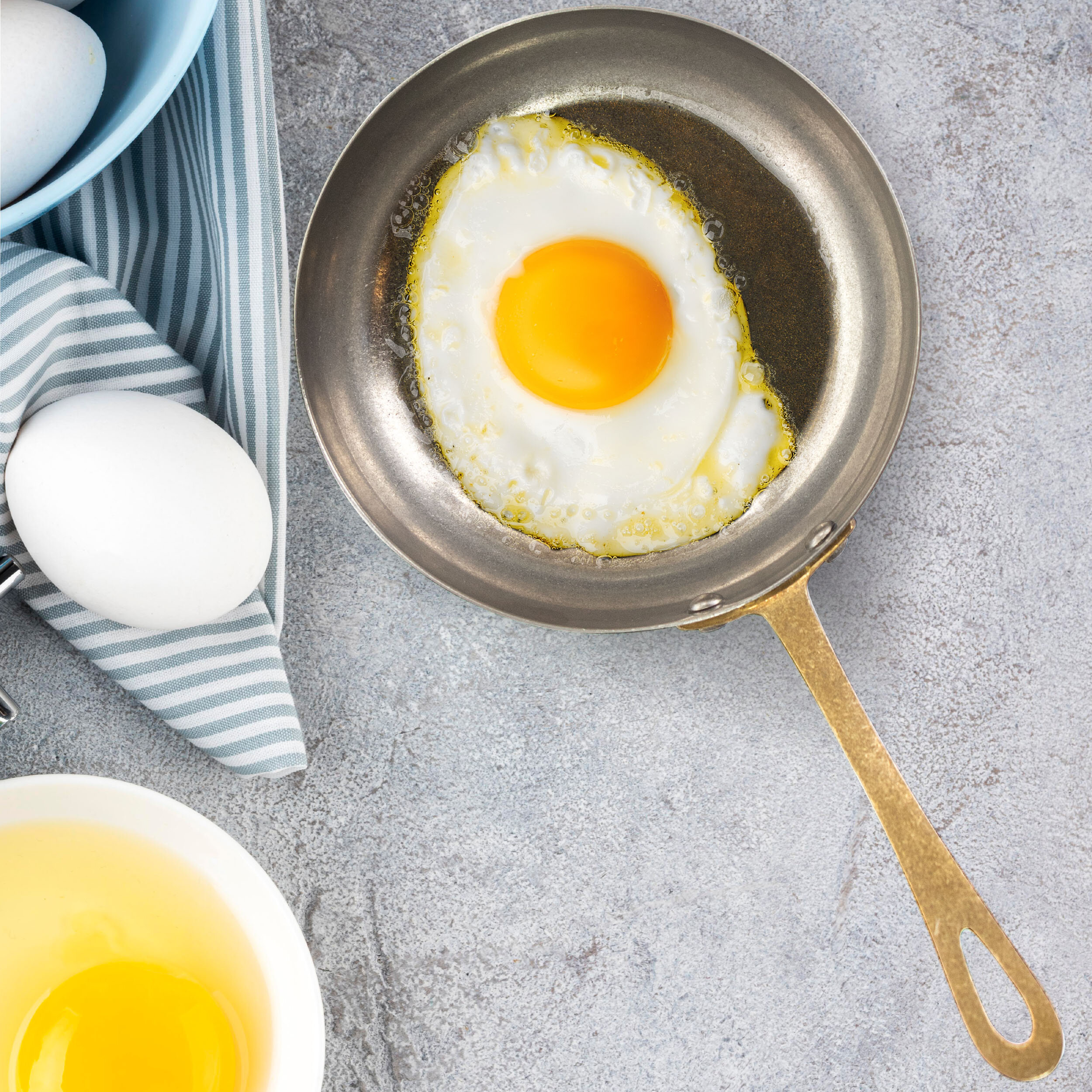
Stainless steel cookware requires a different approach to cook with than other nonstick cookware. By following our simple techniques, you to can be a master of your stainless steel cookware and become a fried egg aficionado.
Firstly, has your stainless pan been seasoned properly. If it hasn’t yet been seasoned, skip to our article on how to season stainless steel cookware. If your pan has been seasoned, read on.
Select a pan that is slightly bigger than your stovetop, and make sure your pan has been thoroughly cleaned.
Remove your eggs from the refrigerator and allow them to come to room temperature.
Choose your cooking fat. Stainless steel cookware needs a layer of fat to prevent food from sticking to the surface. Select a fat or oil that has a high smoking point (Do not use cooking spray), I like to use a mixture of a low cholesterol vegetable oil and butter.
Place your pan onto to cooktop and adjust the heat of the cooktop to medium heat. Allow the pan to preheat and become very hot, to test for the right temperature and a few drops of water to the pan, if the water forms small beads which start to dance over the surface of the pan, your temperature is correct. However, if the water evaporates instantly, lower the heat and test again.
Once your pan has reached the correct temperature, it’s time to add the fat to the pan. I like to add ½ tablespoons of oil to the pan and move the oil over the surface of the pan to coat the entire surface. I then add 1 tablespoon of butter, allowing it to melt, and continue moving the pan to combine the two fats and cover the surface and the sides of the pan.
Once the fat has coated the bottom of the pan, immediately add your eggs. Don’t let the oil get to hot before adding your eggs.
You can crack the eggs directly into the pan, but I like to crack my eggs into an individual bowl for each egg, to ensure freshness and prevent any shell from being added to the pan.
As soon as you have added the eggs into the pan, immediately lower the heat to medium-low.
Now for the crucial tip, don’t touch your eggs!
Allow them to cook without poking or prodding them with your spatula. Once your eggs are cooked they will release from the pan, usually 3 minutes for runny eggs or 5 minutes for well done.
Using a fish spatula, you can remove your eggs if what sunny side up, or flip them for eggs over easy.
Season to your taste and enjoy.
Scrambled Eggs –
So you mastered cooking a fried egg on a stainless steel pan! Let’s step it up and take on Scrambled eggs.
Any top chef will tell you, the true test of a chef is making scrambled eggs. A dish that is simple, quick, and inexpensive can be the undoing of any chef if not done properly.
Like the fried egg, there are some simple steps to follow to achieve scrambled eggs any Michelin Chef would happily devour.
Now there are two schools of thought when cooking scrambled eggs, slow and low heat or medium heat and fast. Now I’m not going to take sides and suggest which method is better, so I will just offer both methods and let you decide which of the two methods you prefer.
Hot & Fast –
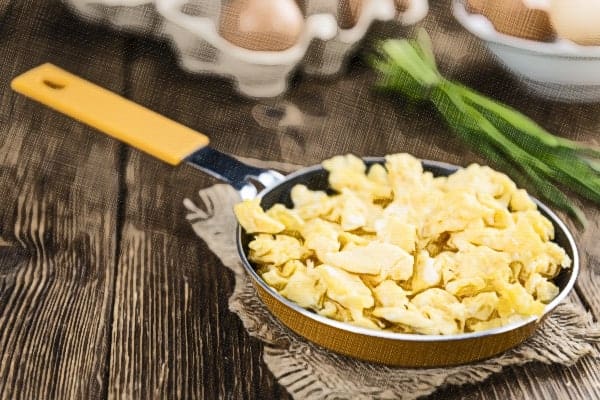
As we discussed when we cooked fried eggs, always start with a clean seasoned pan.
For a single-serve – crack three eggs into a small bowl, season with salt and pepper, and add 1/3 of a cup of heavy cream. Lightly whisk eggs until just combined.
Moving on, place your pan onto the stovetop and preheat the pan over medium heat until the pan is hot.(Do the water test to check).
Add 1 tablespoon of butter and coat the bottom of the pan. Once the butter has melted and is hot and foamy add the eggs to the pan. Let the eggs sit for 10-15 seconds. Reduce the heat to low/medium. Using a silicone spatula gently fold the edges of the eggs to the center of the pan. Don’t overwork the curds, just keep folding over the edges until 90% of the moisture has been cooked off. The scrambled eggs should be soft, sheets or ribbons of moist medium-sized curds.
Remove from the pan immediately and serve hot.
Low & Slow –
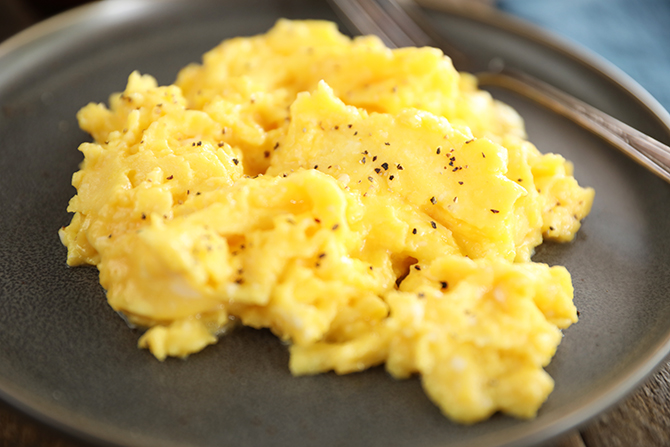
Now, this is more of a traditional chef’s method, resulting in small curds of moist eggs. The technique involves slow, low heat, and some patience.
Again crack three eggs into a mixing bowl, lightly season and add 1/3 cup of heavy cream and whisk to combine.
Use a deep stainless steel pan or a small stainless pot instead of a skillet.
Place on stovetop and add 1 tablespoon of cold butter and the egg mixture. Turn heat on to low. Using a silicone spatula, slowly and continuously move the eggs around the pan. As you continue to move the egg mixture around the pan, they will slowly start to form small curds. Keep moving the eggs until 80% of the moisture has been cooked off. Remove from the heat and continue to move the curds around the pan until cooked. Your finished eggs will resemble tiny curds which are moist and soft.
Remove immediately from the pan and serve hot.
How To Cook Eggs on A Griddle
The broad flat surface of a griddle, either be it electric, gas or wood fired, is a perfect surface to cook eggs. I personally love cooking a summertime breakfast on my gas barbeque for my family, and cooking eggs on the griddle of my barbeque couldn’t be easier.
Fried Eggs
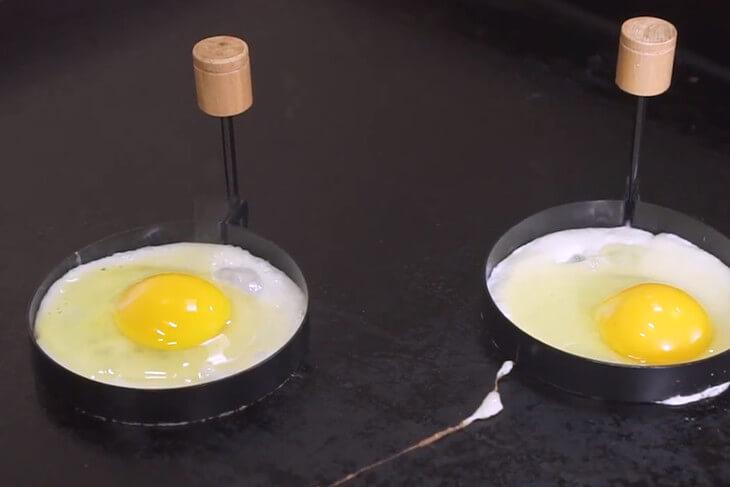
Follow these simple techniques for perfectly cooked fried eggs on your griddle.
Firstly set the temperature of your griddle to medium heat. Using a kitchen cloth and vegetable oil, lightly wipe the surface of the griddle.
Individually crack eggs into small bowls to check for freshness and to avoid egg shells falling onto your griddle.
Place oiled stainless egg rings on your griddle plate, this will keep your eggs uniform in size, stop the eggs from spreading unevenly over your griddle and allow the eggs to cook evenly.
Pour one egg into each of the egg rings.
Season eggs whilst raw.
Allow eggs to cook for 4– 5 minutes.
A good trick for firm yolks or eggs over easy is to get a glass lid from a stockpot. Add a teaspoon of water next to the nearly cooked eggs, and place the lid over the top. The water will evaporate and create steam, the trapped steam will cook the tops of your eggs.
Slide the egg rings off the eggs using tongs, and either transfer the cooked eggs to a plate or flip gently for eggs over medium and cook for a further 2 minutes and remove.
Serve hot.
Scrambled Eggs –
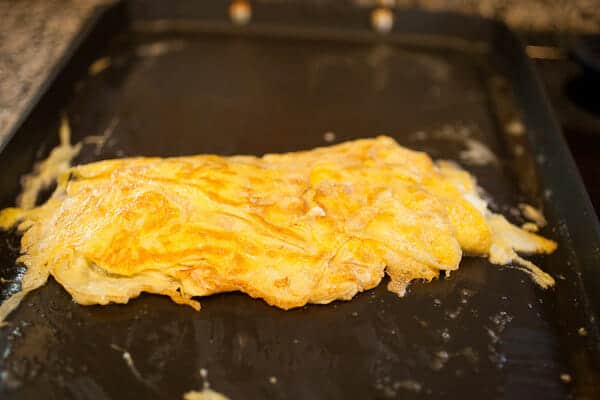
Using the same recipe as before, combine your eggs in a bowl and lightly whisk the ingredients.
Heat your griddle to medium heat.
Either lightly oil the surface or add 1 tablespoon of butter to the griddle. Allow butter to melt, then slowly add the egg mixture to the griddle.
Allow eggs to sit for 10 -15 seconds before dragging a spatula across the griddle in smooth long strokes to create egg curds. Cook eggs until 90% of the moisture is cooked off. Eggs should be ribbons of medium-sized curds, and slightly moist. Remove from the heat and enjoy.
How To Cook Eggs in A Cast Iron Skillet
Cast iron skillets can also be intimidating for home cooks, particularly if you are attempting to cook eggs. However, as with stainless steel cookware, there are some techniques to follow that can ensure success every time you use your cast iron skillet to cook perfect eggs.
To start with, a cast iron skillet needs to be seasoned properly to prevent food from sticking to them, go check out our article on how to season cast iron cookware before moving on.
Cast iron skillet is nicely seasoned? Then let’s move on to cooking eggs.
Fried Eggs
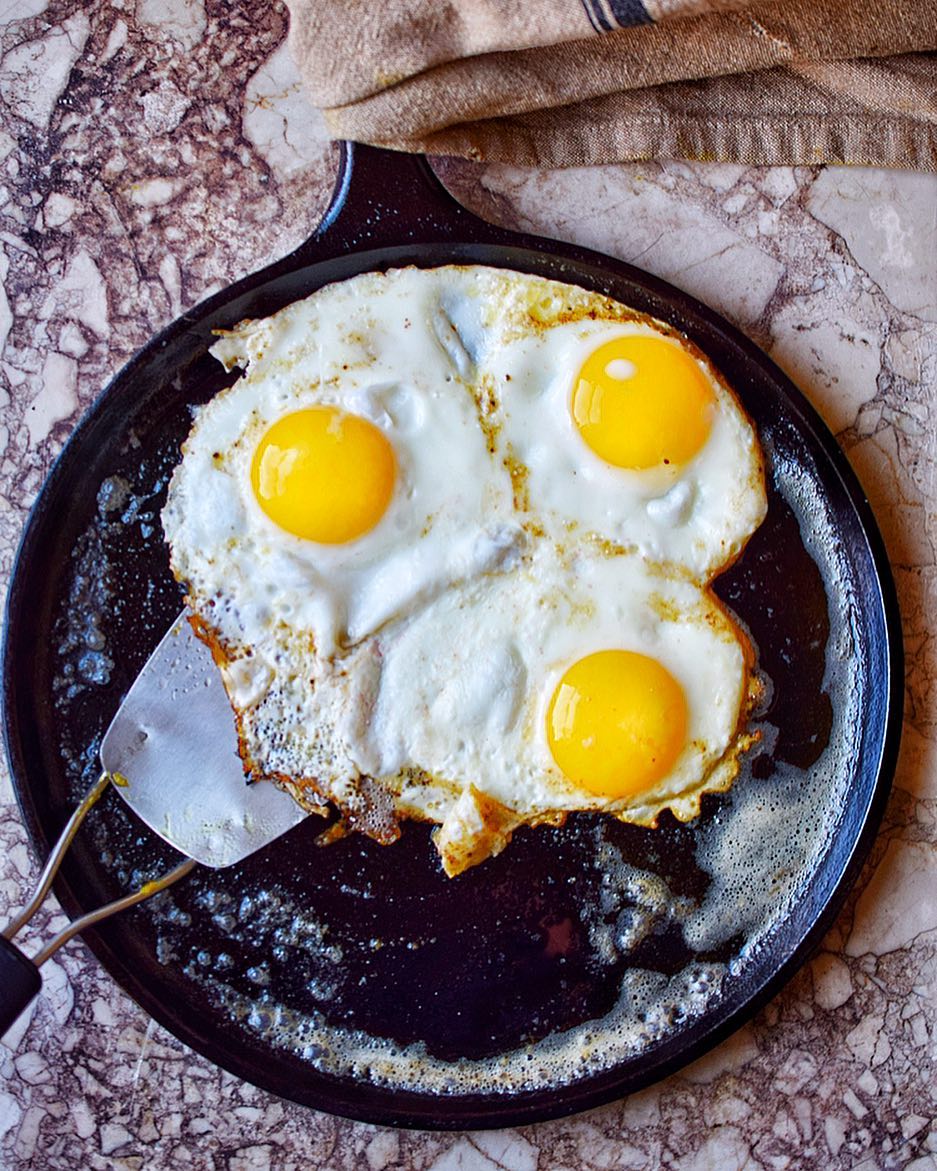
As before, bring your eggs up to room temperature.
Place your cast iron skillet onto your stovetop over medium-high heat. As it takes longer for cast iron to heat than stainless steel, heat for 1-2 minutes, then check by using the water bead test to check for hotness. Once hot reduce to medium heat and add 1 teaspoon of vegetable oil and swirl to coat the bottom of the pan. Once coated add 1 tablespoon of butter and allow it to melt. Let the fat come to a temperature before adding eggs ( 1 minute ). Unlike stainless steel, we want to cook the eggs at a lower temperature and need our fat to heat before using them.
As before cracking individual eggs into a bowl.
Once your fat has come to temperature add one egg at a time to your skillet. Your egg should not sizzle when you add it to the skillet.
Egg whites should slowly turn opaque when cooking on a cast-iron skillet, not turn white instantly, like when cooking on hotter stainless steel pans. Like stainless steel, try not to move the egg too much, it will release from the pan when it is cooked.
As cast iron heats slowly and cools slowly, remember that the skillet will still be hot when you lower or remove it from the heat source, so you can place the lid atop the skillet to finish and harden the top of the egg away from the stovetop.
This method is good for the runny style and eggs over easy. You can even flip your eggs and place the lid on top with a drop of water added to the pan to create steam to finish eggs over medium.
Scrambled Eggs
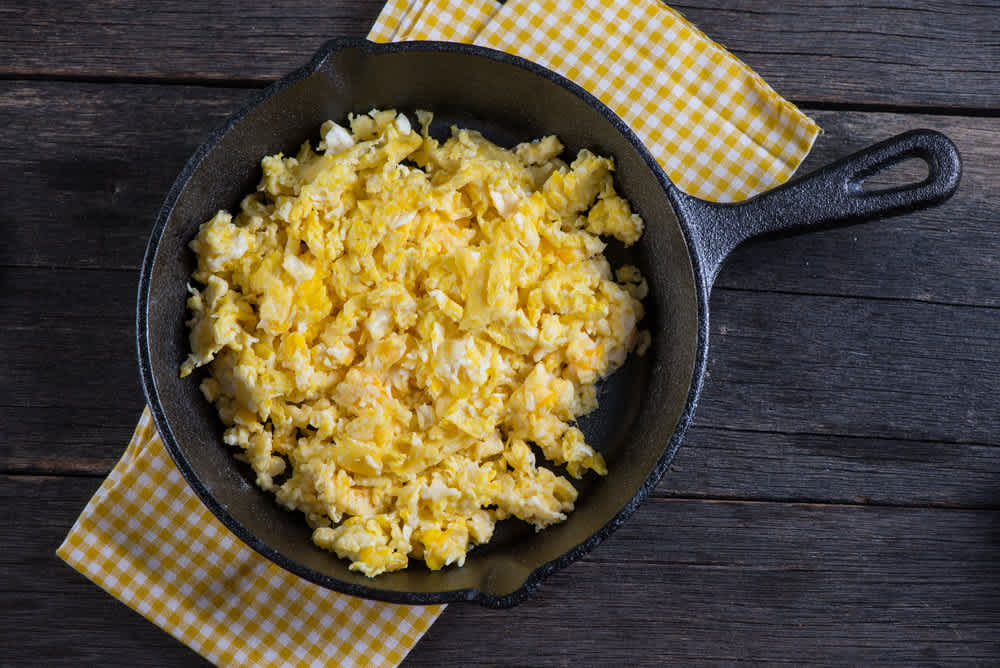
As with fried eggs, cooking scrambled eggs in a cast-iron skillet also involves a few tricks to master perfect scrambled eggs.
Sticking to the same recipe as before, combine your eggs with seasoning and cream.
Place your cast iron onto your stovetop and add a teaspoon of oil and using a kitchen cloth, lightly rub the oil onto the surface of the pan before preheating.
Once oiled, turn on your heat to medium.
Once the pan is hot add 1 tablespoon of butter and swirl butter to coat the bottom of the pan.
Once the butter has melted immediately add the eggs and lower the heat to low.
Allow eggs to sit for 5-10 seconds.
Use a silicone spatula to gently move the edges of the egg to the center of the pan. Repeat this action to create medium-sized ribbons of egg curds. Cook for 10-15 seconds, then remove the pan from the heat and gently keep scraping the edges of the eggs to the center of the pan. Once eggs are 90% cooked, remove them from the pan. Eggs should be medium-sized ribbons of curds and moist.
Serve hot immediately.